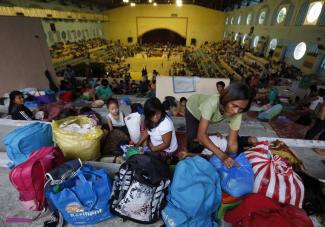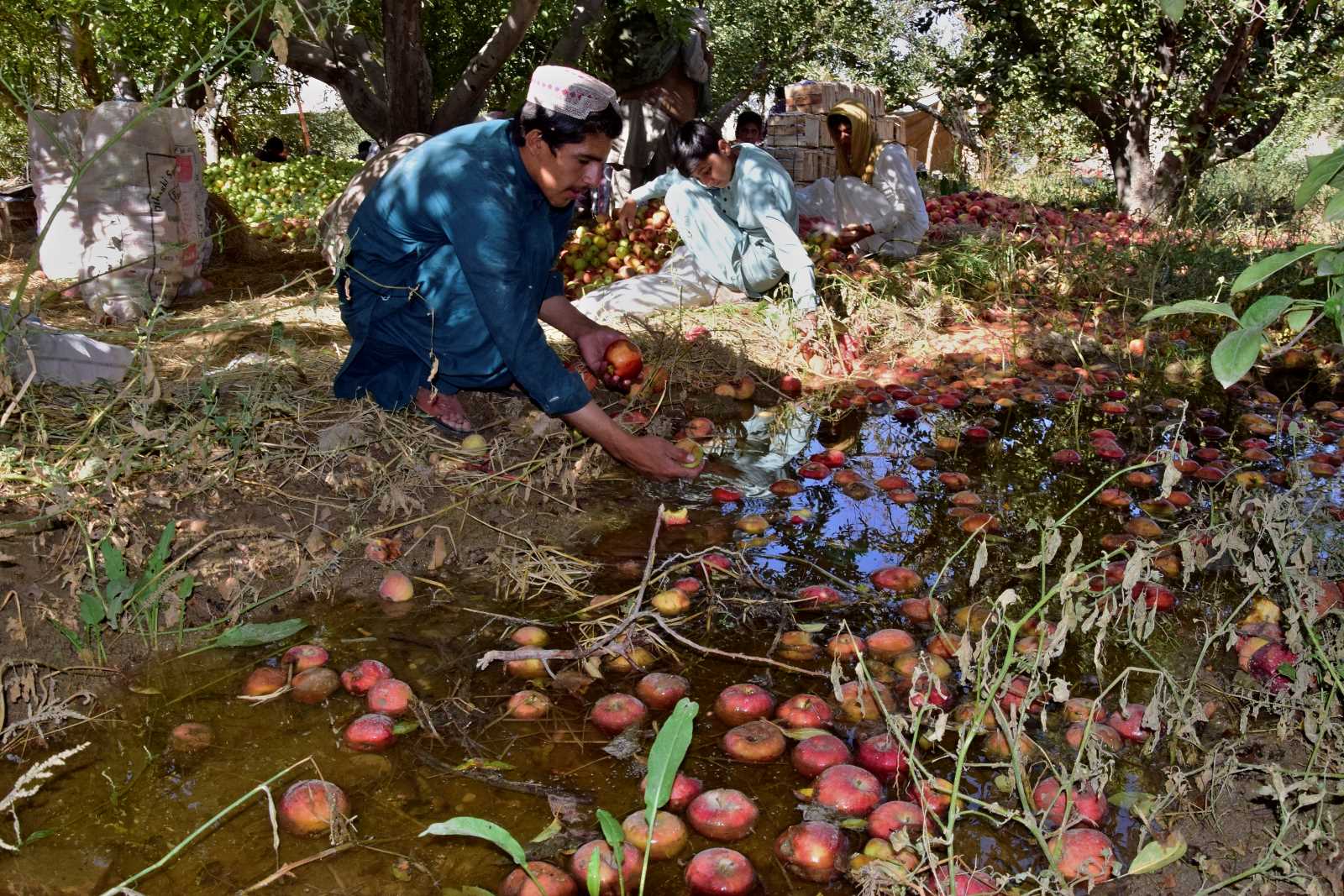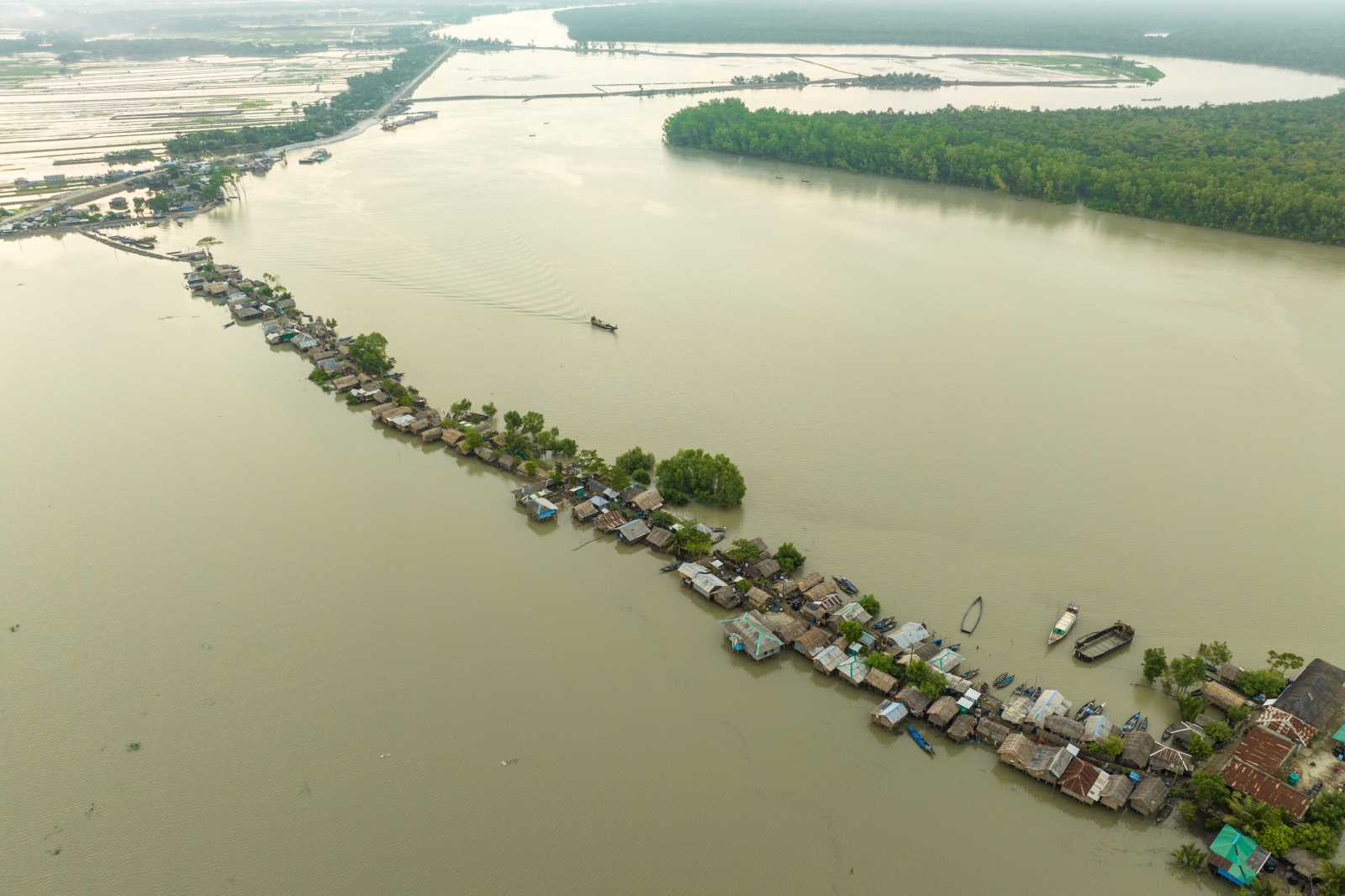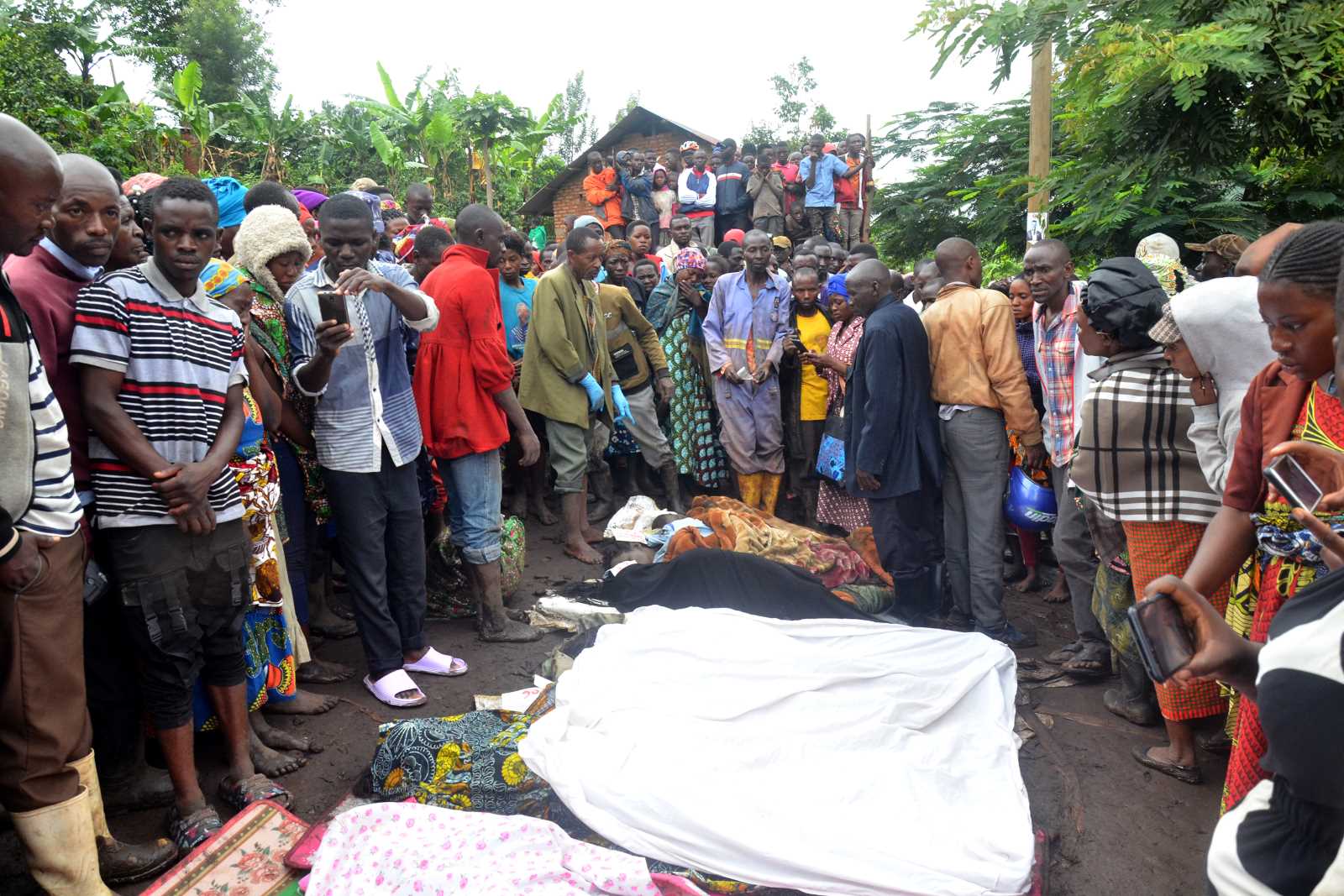Disaster risks
Changing attitude

Natural disasters are part of life in the Philippines’ over 7,000 islands. By the time many Filipinos turn 21, they are likely to have experienced more than 200 tropical cyclones with top wind speeds of at least 118 km/h. Storms often cause severe flooding and landslides. Earthquakes and volcano eruptions are common too.
In 2017, the Philippines with 100 million people ranked third behind the Vanuatu and Tonga, two small Pacific island nations, according to the World Risk Index. The index is compiled by an alliance of German non-governmental organisations (“Bündnis Entwicklung Hilft”) and assesses 173 countries’ exposure to natural disaster risks as well as their ability to cope.
“Whether natural hazards turn into disasters depends not only on the intensity of an event but is also crucially determined by a society’s level of development,” says Isagani Serrano, the president of the non-governmental Rural Reconstruction Movement and a co-convenor of Social Watch Philippines.
Pedro Walpole of Ateneo de Manila, a highly respected Catholic university, agrees. In his view, natural events like typhoons only become disasters when humans die. His grim forecast is this will continue to happen because “in the Philippines, we have an awful lot of very poor, marginalised people who have no place to go.”
This view is reinforced by Social Watch data:
- Over half the nation’s people live along coastlines, exposing them to typhoons and storm surges.
- Slightly more than a quarter are so poor that they cannot recover material losses or repair damages.
- One fifth are undernourished, so they are vulnerable to the health challenges of a storm’s aftermath.
Filipino’s traditional attitude to calamities is best expressed by the aphorism “bahala na”, which means “let’s leave it up to God”. Foreigners often consider it fatalistic. Filipinos seem to be resigned to accept nature’s wrath. The prominent scholar Alfredo Lagmay, who passed away in 2005, proposed a rather different interpretation of “bahala na” however. He argued it invited risk-taking while faced with possible failure. “It gives a person courage to see himself through hard times,” he said. It is “like dancing with the cosmos.”
For decades after independence in 1946, government responses to disasters were largely fatalistic and opportunistic. All administrations basically followed the same morning-after-the-storm ritual. The idea was that little could be done to prevent disasters, so policymakers’ job was to deliver relief fast after a disaster struck. Affected families were crammed in school rooms until floods subsided. Typically, bags of rice and food cans were marked with the name of the politician who doled them out. Relief efforts were thus really re-election efforts. This practice has fallen into disrepute.
Apart from handing out supplies, there was no job for local governments. It was the army’s task to conduct search and rescue missions. It also cleared and repaired roads.
Failure to handle a catastrophe competently could end political careers. Typhoon Ketsana flooded Metro Manila in September 2009. Then President Gloria Macapagal-Arroyo had groomed her Defense Secretary Gilbert Teodoro to run for president in 2010. He failed miserably to send rubber boats to rescue trapped homeowners from the flood waters – and that contributed to sinking his presidential campaign. Under the impression of the typhoon, however, the government changed its stance.
Innovative approach
In 2010, the Arroyo-dominated Congress approved landmark legislation. It created the National Disaster Risk Reduction and Management Council (NDRRMC). Both disaster risk management (DRM) and disaster risk reduction (DRR) were innovative concepts. The new law fulfilled the Philippines’ commitment to implement the Hyogo Framework for Action, which had been the result of a UN conference on resilience building in Japan in 2005.
The new law marked a paradigm shift, according to Carmelita Laverinto of the Office of Civil Defence. She says that governments and relief agencies earlier viewed disasters as “one-off events” and responded accordingly. In her view, neither the social and economic implications of disasters nor their causes were appropriately taken into account.
By contrast, the new law directed the bureaucracy to be “proactive” instead of merely “reactive”. From the national level down to the local government units (LGUs – towns, cities and provinces), state institutions must now implement DRM and DRR.
DRM has become a year-round agenda with the NDRRMC setting targets and policies for disaster preparedness. LGUs must now prepare “hazard maps”, identifying areas that are prone to landslides, storm surges, flooding and other disaster impacts. Previously, such maps – if they were prepared at all – were kept secret. Real estate developers used political connections to build, for instance, housing on dry river beds and landslide prone areas. DRR is about decreasing the vulnerabilities and boosting capacities of the communities concerned.
In an audit in 2014, Laverinto found that:
- no town or city had yet been awarded the national Seal of Disaster Preparedness, and
- the main reason was the mismatch between institutional responsibilities and LGU capacities.
The LGUs simply lacked staff trained in DRR and DRM. They also lacked mechanisms for early warnings, search and rescue missions, evacuation, health care et cetera. Things have improved a bit since 2014, and several dozen cities and towns have won the seal in the meantime. One reason was certainly Typhoon Haiyan.
Typhoon Haiyan
In November 2013, Typhoon Haiyan brutally showed that local level resilience had not been built adequately. The super storm devastated the city of Tacloban, the island of Leyte and, more generally, the Visayas region in central Philippines. International humanitarian agencies soon arrived. Their interventions were badly needed and welcome, though some downsides were noticed (see box).
In the disaster area, Lourdes Padilla-Espenido represented WeDpro, a civil-society organisation fighting for the rights of women and youth. She reports that the “LGUs themselves were traumatised.” Because leading officials and staffers had lost loved ones and homes, it took them long to take action.
However, Espenido saw at least two bright spots of preventive action having delivered results:
- Several houses in the town of Palo, which was nearly levelled, were still standing. It turned out that what they had in common was that they had been constructed according to the Building Code.
- In a coastal area of Capiz province, the storm surge did not smash the community the way it did in Tacloban. Residents told Espenido that they had “been saved by the mangroves”. The village had expanded the mangrove forest with support from a foreign donor.
On the downside, then Tacloban Mayor Alfred Romualdez, who belongs to the extended family of former dictator Ferdinand Marcos, failed to fully warn the residents. The reason was that he did not know what “storm surge” means. Mar Roxas, who was the national cabinet member responsible for LGUs, forgot to bring a satellite phone to the disaster area. Then President Benigno Aquino III was seen as cold and uncaring because he did not show his emotions. He later said that he had controlled his emotions to get things done. The people of Leyte, however, felt let down.
One of those who was warmly welcomed bringing relief goods to Tacloban in November 2013 was Rodrigo Duterte, then serving of Davao City in Mindanao. Almost in tears, Duterte told the media, “God must have been somewhere else,” when the storm hit.
Today, Duterte is president. It is now his job to protect the nation from disaster. DRR and DRM should be high on the agenda. It is therefore not encouraging that he has slashed the Calamity Fund for disaster relief. For 2016, the Aquino administration had budgeted the equivalent of about $ 7.4 billion for this purpose. In Duterte’s budget for 2017, that figure dropped by about 40 %. For 2018, the absolute number increased again slightly to $ 385 million, but it now includes $ 196 million for the rehabilitation of Marawi, the city on Mindanao which was liberated from an Islamist militia after extended fighting by the armed forces. It also includes $ 39 million for the rehabilitation of the world famous island resort of Boracay. The Calamity Fund thus has only about $ 150 million for any disasters this year. A single typhoon could wipe it out.
Social Watch leader Serrano says Duterte’s cuts were surprising. Given the country’s risk exposure, he says, disaster preparedness must be a priority. On the bright side, while Duterte has lambasted the UN for criticising his extremely violent war on drugs (see D+C/E+Z e-Paper, 2017/10, p. 15), close cooperation continues on disaster relief and mitigation between the NDRRMC and Office of Civil Defense and UN agencies.
Raissa Robles is an investigative journalist and publisher based in Manila.
https://twitter.com/raissawriter
https://raissarobles.com












